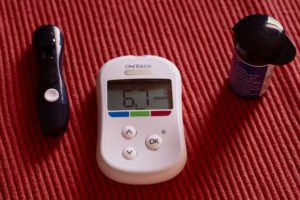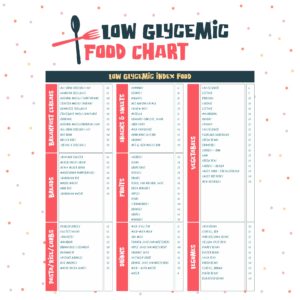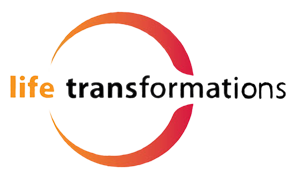Diabetes medications for weight loss
There are many new, and old medications designed for managing diabetes being prescribed to individuals who do not have diabetes. These are meant to help people lose high amounts of body weight in a short amount of time, or help patients learn to eat healthy (manage diabetes, eat like a diabetic). I’m sure we all know the number of individuals suffering from obesity and Type 2 diabetes is high, so there are quite a few individuals on these medications.
The purpose of this blog post is general information for the everyday person. I always think listening to and consulting a physician is the best way to find medical advice. But doing your own consumer research is a good practice too. So here we go.
“There is a great new medicine to help you lose weight quickly.” This is what many people want to hear. A magic pill is finally created to help them look and feel like 100%!!! If you do not have diabetes, these medications are prescribed for short term use for weight loss, not something to be on forever.
What Are These Prescription Drugs?
G1P1 and SGLT2 are the common two types of these medications. Mounjaro, Ozempic, Trulicity, Rybelsus, Adlyxin, Victoza, Saxenda, Byetta are some common prescription drug names .
GLP-1s appear to help curb hunger. These drugs also slow the movement of food from the stomach into the small![]()
![]()
![]()
![]() intestine. As a result, you may feel full faster and longer, so you eat less.
intestine. As a result, you may feel full faster and longer, so you eat less.![]()
SGLT2s lower your blood sugar levels by preventing your kidneys from reabsorbing sugar that is created by your![]() body and the extra sugar leaves through in your urine.
body and the extra sugar leaves through in your urine.
These medications are designed to stimulate insulin production when blood sugar is high, which![]() decreases blood sugar and hunger.
decreases blood sugar and hunger.
They were designed to help diabetes patients manage diabetes. In the past year, many doctors have been prescribing![]() them to patients, and insurance is covering the prescriptions for non-diabetes patients.
them to patients, and insurance is covering the prescriptions for non-diabetes patients.
If someone can take one of these drugs, lose weight, then go off the medication and maintain weight loss while eating healthy foods (controlling blood sugar), this is fantastic. Some top side effects while on these prescription drugs are decreased hunger, nausea, vomiting, diarrhea.
Rapid Weight Loss Side Effects
You may hear the term Ozempic butt. This is a flat backside, mainly from rapid weight loss. The butt or glutes is a muscle. Rapid weight loss causes muscle loss and skin loses elasticity. Some people also see this on the face. As you lose weight, saggy skin on the face is common.
What happens Next
When you stop taking these medications, your body stops changing your response to blood sugar. When it comes time to stop taking the diabetes/insulin lowering medicine, you need a plan to maintain weight loss and health benefits. So, if you don’t want to gain back the weight you have lost, you need to start living a healthy lifestyle. Exercise…eat healthy. A good place to start is looking at foods that do not cause insulin levels to rise.
The glycemic index or glycaemic index (GI) is an important tool used to measure the effect of different foods on blood sugar (glucose) levels.
on blood sugar (glucose) levels.
The GI ranks carbohydrates on a scale from 0 to 100 according to their effect on blood sugar levels.
Foods with a high GI (70 or higher) are broken down quickly, causing blood sugar and insulin levels to rise quickly. Foods with a low GI (55 or lower) are broken down more slowly, resulting in a gradual rise in blood sugar and insulin levels. Information from glycemic-index.net
Control Blood Sugar
Below are Five Healthy Lifestyle Ideas to naturally lower blood sugar:
Exercise
Drink Water
Watch food Portions
Sleep for Recovery
Watch Stress Levels
Exercise
ACSM (American College of Sports Medicine) recommends the following:
Do moderately intense cardio 30 minutes a day, 5 days a week
OR
Do vigorously intense cardio 20 minutes a day, 3 days a week
AND
Do 8-10 strength- training exercises 8-12 reps of each exercise twice a week
*Moderate-intensity physical activity meals working hard enough to raise the heart rate and to break a sweat, yet still being able to carry on a conversation.
*Recommendation is for the average healthy adult to maintain health and reduce risk for chronic disease. 60-90 minutes of physical activity may be necessary to maintain weight loss.
Let us explore different types of exercise.
Resistance Training
Resistance training is using resistance to build strength. The more you use resistance, the stronger you become. Examples of resistance forms are body weight (pushups), bands (banded chest press), weights (bench press or dumbbell press).
Benefits include increasing the following:
- Muscle mass/decreasing body fat
- BMR (basal metabolic rate)
- Mobility & balance
- HDL cholesterol (the good cholesterol)
- Self-confidence/body image
- Restful sleep
Cardiovascular Training
Cardiovascular training is vigorous activity that increases heart rate and respiration. Examples are walking/running, biking, mowing lawn at quick pace, treadmill, Elliptical.
Benefits
- Lowers blood pressure
- Regulate blood sugar
- Reduces asthma symptoms
- Reduces chronic pain
- Weight loss
- Strengthens immune system
Exercise plan example
Cardiovascular training-20 minutes per day, 5 days per week-walk around neighborhood or park
Resistance training– 30 minutes, 3 times per week-Home exercise. Full body exercises
3 sets, 10-15 reps each, 30 seconds rest in between exercises
- Incline Pushups (chest)
- Squats (lower body)
- Band Curls (biceps)
- Band Rows (back)
- Stationary Lunge (lower body)
- Calf Raise (calf)
- Superman (low back)
- Crunches Legs up (core)
The biggest takeaway: Have an exit plan. Once your doctor takes you off this medication, be prepared to eat low GI foods/healthy foods and exercise.
In good health,
Molly Wichman
Life Transformations Personal Training
